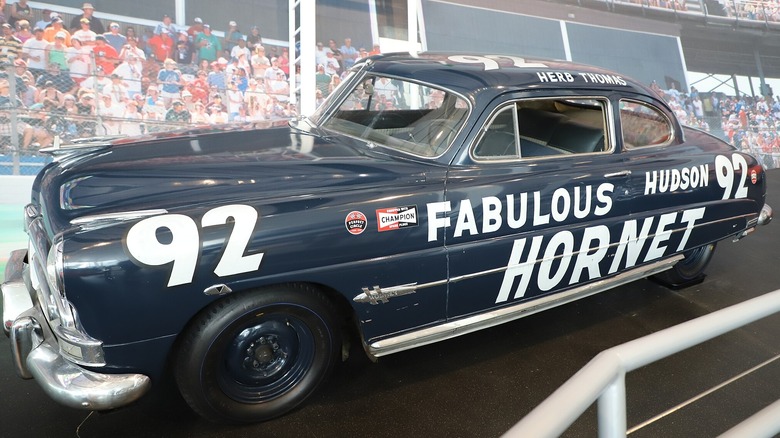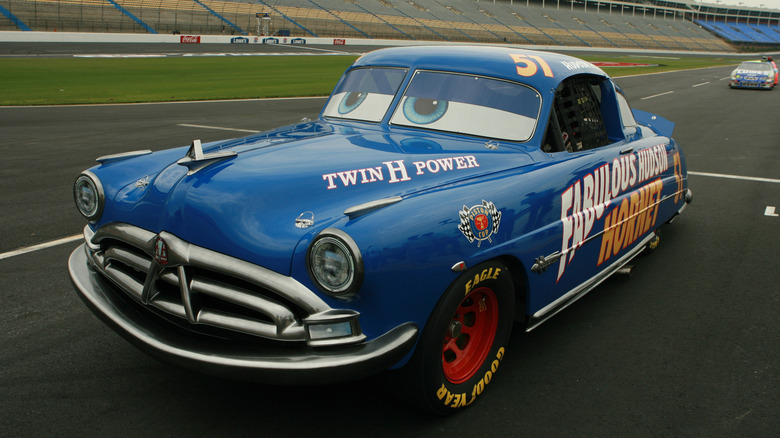How Hudson's Twin H-Power Engine Became A NASCAR Legend
When you think of NASCAR champions, Detroit's "Big Three" immediately spring to mind. Ford, Chevy, and Chrysler have all taken turns dominating the banked oval, but in the early 1950s, an unlikely candidate was making a name for itself: Hudson. Founded in 1909 by Joseph Hudson, owner of a chain of department stores, Hudson Motor Car Company was undeniably an innovator. The Hornet cars that participated in NASCAR were aerodynamically styled with a low center of gravity that made for good handling, as well as early unibody construction that resulted in light weight. However, what really sealed the deal in the Hornet's success was its twin H-power inline six-cylinder engine, which embarrassed many V8 engines of the era.
While Hudson dabbled in V8 engines, the humble six-cylinder was really their forte since developing the world's first balanced crankshaft for the format in 1916, which promoted smoother and higher RPM operation. In 1952, a 308 cubic inch "Twin-H" version of the inline-six was hatched, with the twin moniker referring to the engine's dual carburetors, a rarity at the time.
In factory form, the engine was good for 170 horsepower, with up to 210 horsepower available with a series of enhancements clandestinely known as the "7-X modifications." Besides receiving special attention and hand-assembly on the production line, the 7-X engines also benefitted from larger valves, a higher compression ratio, and a bespoke camshaft.
[Featured image by Jeffrey Hayes via Wikimedia Commons | Cropped and scaled | CC BY 2.0]
A winning record wasn't enough to sustain the brand
How successful was the Hornet with its Twin-H engine? In 1952, the car won 27 out of 34 Grand National races. Proving it wasn't just a fluke, the Hornet teams followed up by winning 22 out of 34 races in 1953 and 17 out of 34 in 1954. Unfortunately, the old adage of "Win on Sunday, sell on Monday" wasn't particularly true for Hudson. The brand's big NASCAR victories weren't translating into sales on the showroom floor as it struggled to keep up with the relentless innovation and styling changes wrought by larger automakers like General Motors and Ford.
In 1954, Hudson merged with Nash-Kelvinator to form the American Motors Corporation (AMC), which would eventually grow to include other smaller, independent brands. Reportedly, AMC didn't have any interest in continuing to support racing, so Hudson slinked away from the track and, sadly, ceased producing cars altogether in 1957.
Nearly 50 years after the Hudson assembly line was shuttered, a blue 1951 Hornet played the role of Doc Hudson, a former "Piston Cup" racing champion in the blockbuster 2006 Pixar film "Cars." Fittingly, Doc Hudson was voiced by real-life racer and actor Paul Newman in his final role before sadly passing away two years later.

